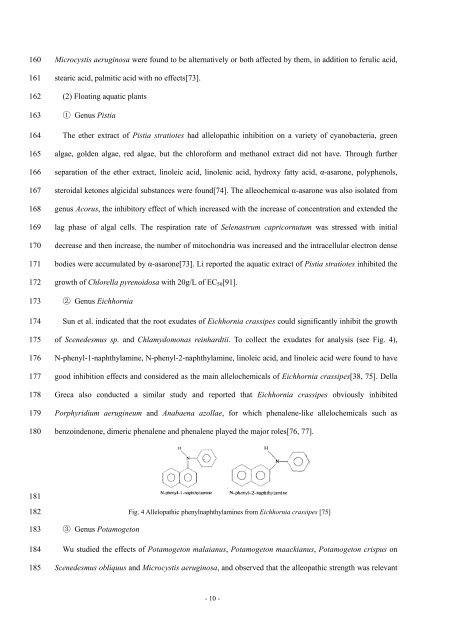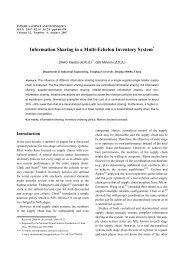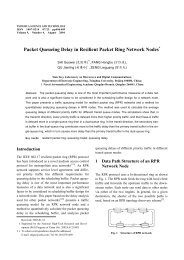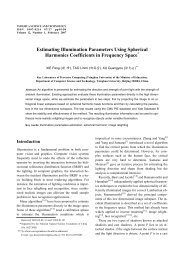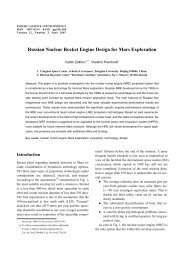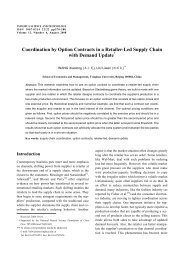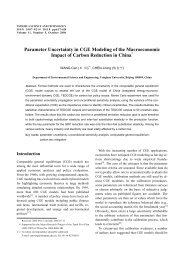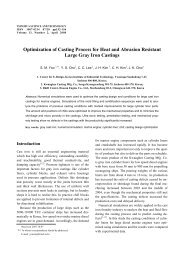Sample Paper_Submission.pdf
Sample Paper_Submission.pdf
Sample Paper_Submission.pdf
Create successful ePaper yourself
Turn your PDF publications into a flip-book with our unique Google optimized e-Paper software.
160<br />
161<br />
162<br />
163<br />
164<br />
165<br />
166<br />
167<br />
168<br />
169<br />
170<br />
171<br />
172<br />
173<br />
174<br />
175<br />
176<br />
177<br />
178<br />
179<br />
180<br />
181<br />
182<br />
183<br />
184<br />
185<br />
Microcystis aeruginosa were found to be alternatively or both affected by them, in addition to ferulic acid,<br />
stearic acid, palmitic acid with no effects[73].<br />
(2) Floating aquatic plants<br />
① Genus Pistia<br />
The ether extract of Pistia stratiotes had allelopathic inhibition on a variety of cyanobacteria, green<br />
algae, golden algae, red algae, but the chloroform and methanol extract did not have. Through further<br />
separation of the ether extract, linoleic acid, linolenic acid, hydroxy fatty acid, α-asarone, polyphenols,<br />
steroidal ketones algicidal substances were found[74]. The alleochemical α-asarone was also isolated from<br />
genus Acorus, the inhibitory effect of which increased with the increase of concentration and extended the<br />
lag phase of algal cells. The respiration rate of Selenastrum capricornutum was stressed with initial<br />
decrease and then increase, the number of mitochondria was increased and the intracellular electron dense<br />
bodies were accumulated by α-asarone[73]. Li reported the aquatic extract of Pistia stratiotes inhibited the<br />
growth of Chlorella pyrenoidosa with 20g/L of EC50[91].<br />
② Genus Eichhornia<br />
Sun et al. indicated that the root exudates of Eichhornia crassipes could significantly inhibit the growth<br />
of Scenedesmus sp. and Chlamydomonas reinhardtii. To collect the exudates for analysis (see Fig. 4),<br />
N-phenyl-1-naphthylamine, N-phenyl-2-naphthylamine, linoleic acid, and linoleic acid were found to have<br />
good inhibition effects and considered as the main allelochemicals of Eichhornia crassipes[38, 75]. Della<br />
Greca also conducted a similar study and reported that Eichhornia crassipes obviously inhibited<br />
Porphyridium aerugineum and Anabaena azollae, for which phenalene-like allelochemicals such as<br />
benzoindenone, dimeric phenalene and phenalene played the major roles[76, 77].<br />
③ Genus Potamogeton<br />
Fig. 4 Allelopathic phenylnaphthylamines from Eichhornia crassipes [75]<br />
Wu studied the effects of Potamogeton malaianus, Potamogeton maackianus, Potamogeton crispus on<br />
Scenedesmus obliquus and Microcystis aeruginosa, and observed that the alleopathic strength was relevant<br />
- 10 -


